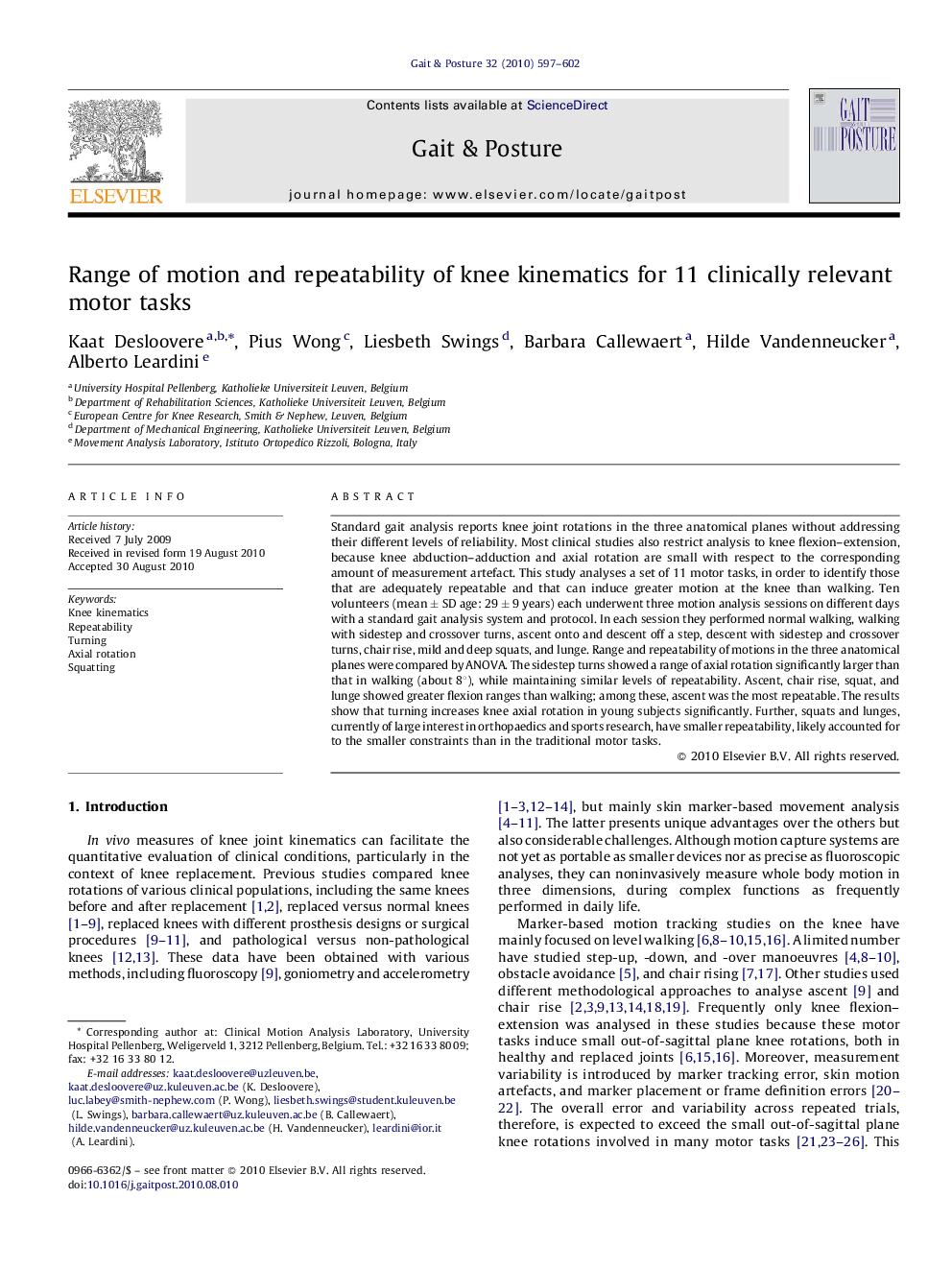| Article ID | Journal | Published Year | Pages | File Type |
|---|---|---|---|---|
| 4057020 | Gait & Posture | 2010 | 6 Pages |
Standard gait analysis reports knee joint rotations in the three anatomical planes without addressing their different levels of reliability. Most clinical studies also restrict analysis to knee flexion–extension, because knee abduction–adduction and axial rotation are small with respect to the corresponding amount of measurement artefact. This study analyses a set of 11 motor tasks, in order to identify those that are adequately repeatable and that can induce greater motion at the knee than walking. Ten volunteers (mean ± SD age: 29 ± 9 years) each underwent three motion analysis sessions on different days with a standard gait analysis system and protocol. In each session they performed normal walking, walking with sidestep and crossover turns, ascent onto and descent off a step, descent with sidestep and crossover turns, chair rise, mild and deep squats, and lunge. Range and repeatability of motions in the three anatomical planes were compared by ANOVA. The sidestep turns showed a range of axial rotation significantly larger than that in walking (about 8°), while maintaining similar levels of repeatability. Ascent, chair rise, squat, and lunge showed greater flexion ranges than walking; among these, ascent was the most repeatable. The results show that turning increases knee axial rotation in young subjects significantly. Further, squats and lunges, currently of large interest in orthopaedics and sports research, have smaller repeatability, likely accounted for to the smaller constraints than in the traditional motor tasks.
